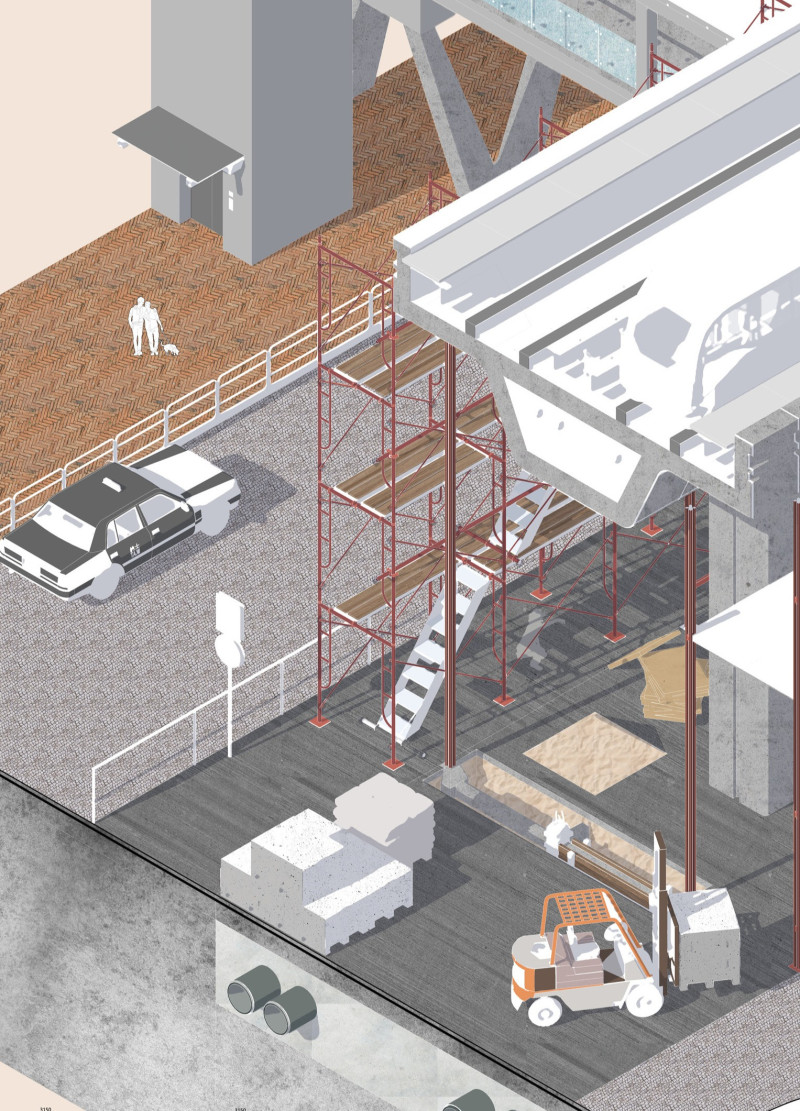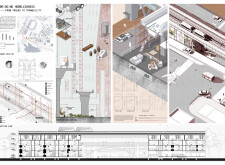5 key facts about this project
## Project Overview
Located beneath the Light Rail Transit (LRT) tracks near the Putra World Trade Centre (PWTC) station in Malaysia, the design addresses the critical issue of homelessness by converting an underutilized urban space into a functional habitat. The intent is to create a setting that promotes tranquility and social cohesion for homeless individuals, transforming a neglected area into a supportive community environment.
## Spatial Integration
The design capitalizes on the existing transportation framework, establishing a link between the dual functions of commuting and residing. It incorporates communal areas to encourage social interaction, thereby facilitating rehabilitation and fostering community ties. Careful consideration of sustainability underpins the selection of materials and construction methods, aiming to reduce the ecological footprint while enhancing user experience.
### Material Specifications
The project employs a diverse range of materials to achieve both functional and aesthetic objectives:
- **Concrete** is used for structural integrity, ensuring the buildings' durability.
- **Steel** features prominently in roofing and framing, providing robustness while conveying a contemporary aesthetic.
- **Timber** serves as a warm element in flooring and communal areas, enhancing comfort.
- **Glass** integrates as partitions to maximize natural light and promote visual transparency within shared spaces.
### Functional Layout
Designed with an emphasis on efficiency and user comfort, the project includes:
- **Compact Modular Units**: These residential spaces prioritize privacy and safety, equipped with essential amenities to foster a dignified living environment.
- **Central Community Areas**: These spaces enable social interaction, featuring seating and recreation facilities.
- **Hygiene and Nutrition Services**: Dedicated facilities support residents' basic needs, reinforcing the project's commitment to health and well-being.
Overall, the layout promotes easy access to communal facilities while delineating public and private areas, enhancing security and community integration.


















































